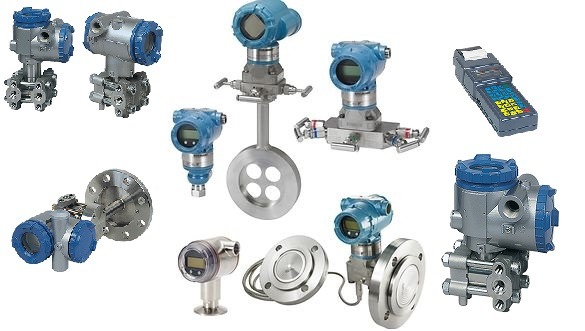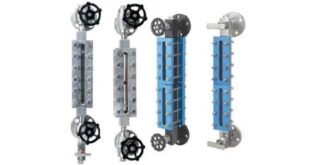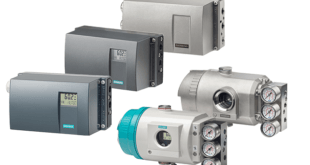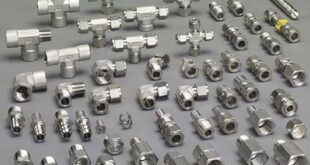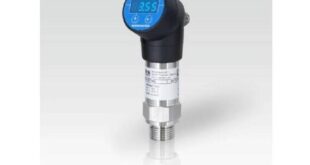What is a pressure transmitter and its types and how does it work?
What is a pressure transmitter?
A pressure transmitter or pressure sensor is a device that measures pressure in liquids, fluids, or gases and converts low-level electrical outputs from pressure-sensing elements into higher-level signals that can be transmitted over long distances for processing and More use in different systems. Various measurement technologies have been used to measure the pressure of liquids and gases.
Pressure transmitters are commonly used to measure pressure inside industrial machinery, tanks, pipes, and various processes in order to warn the user before a disaster occurs. They have various uses, most of which are industrial in nature. A pressure gauge is easily recognized because it is a round gauge that indicates different pressure levels. While pressure transmitters are similar to other gauges, they are essential for many of the applications they are used for.
How a pressure transmitter works
There are more than 50 types of pressure transmitters, all of which work differently. Therefore, it is difficult to describe how they all work within the scope of this article. For example, pressure transmitters that measure high-speed changes in pressure depend on piezoelectric materials—materials capable of converting mechanical force in the form of pressure into electrical current. Barometer sensors, on the other hand, rely on pure air pressure to move a true gauge and can be calibrated to a specific atmospheric pressure.
Types of pressure transmitters
Pressure transmitters are divided into three types:
- Absolute transmitter: This transmitter takes the vacuum pressure as its basis and measures the process pressure.
- Gauge transmitter: This type of transmitter measures the pressure of the process with the atmospheric pressure of the place as a base.
- Differential Transmitter: When sensing units receive multiple pressures as input, differential transmitters measure the difference between the various input pressures.
Pressure transmitters can be classified according to the types of screens and other features available by the manufacturer. Only a simple visual indicator is provided by a needle in analog meters. Digital display units provide specific numerical or functional values in engineering units. These displays may be of different types such as liquid plasma, light emitting diode (LED), liquid crystal displays (LCD) and other types of multi-layer displays. As far as features are concerned, temperature compensation is used in smart pressure transmitters as a built-in feature.
In some pressure transmitters, integral audible or visual alarms and/or output switches with relay contacts or soft logic forms are also available. Explosion-proof or intrinsically safe pressure transmitters are also available, suitable for installation in hazardous areas with limited application in power plants.
Output types of pressure transmitters
Various types of electrical signals are available in pressure transmitters as outputs such as analog voltage and analog current, but current output (4-20 mA) is always preferred because it is suitable for long transmission coverage and low attenuation characteristics. Mounted digital output signals are also available with pressure transmitters (smart transmitter type) and are typically encoded with frequency modulation (FM) or some other modulation scheme such as sine wave or pulse train.
The main global and widespread communication protocols through which transmitter outputs are transmitted include HART, Ethernet, Fieldbus, and Profibus.
Specifications and criteria
There are many criteria that characterize the performance of a pressure transmitter, which broadly include, but are not limited to:
- Work pressure
- vacuum range
- Accuracy
- response time
- Dead band and operating temperature.
The working pressure is the maximum allowable pressure at which the pressure transmitter is designed to work. As a general rule of thumb, it should not exceed 75% of its maximum rated range.
Vacuum range, another important measurement, covers the lowest vacuum pressure and the highest vacuum pressure.
Accuracy is described as the degree of closeness of the measured value to the actual value with respect to the aperture length and is expressed as a percentage. In other words, it is the difference between the actual value and the indication expressed as a span percentage. In cases where the accuracy is different between the average opening and the first and last quarter of the scale, the highest percentage of error is reported. Here, accuracy is overall accuracy including repeatability. Basic pressure transmitters can be divided into two categories: force collector types and others.
Types of power collectors
Devices that respond to changes in applied pressure by mechanical deflection are Bourdon tubes, capsules, diaphragms, or rings that are made of a highly elastic or flexible element. Devices based on the movement of sealed pistons or cylinders are also available. All these are classified as types of power gathering. Electronic pressure sensors typically use a force collector to measure the pressure (or deflection) as a result of applying pressure (pressure) to the area.
Piezo-resistive devices sense changes in electrical charges in a resistor. The piezoelectric pressure transmitter measures dynamic and quasi-static pressures. They operate in charge mode, which produces a high-impedance charge output, and voltage mode, which uses an amplifier to convert a high-impedance charge into a low-impedance output voltage.
Thin film devices consist of a very thin layer of material, usually titanium nitride or polysilicon, formed on a substrate. Pressure transmitters that use microelectromechanical systems (ie, variable capacitors) and vibrating elements are also available. More details are given in the following paragraphs regarding the working principles of force collector type sensors that use mechanical deflection or strain.
Capacitive type sensors
They use a diaphragm and pressure cavity to create a variable capacitor to detect deflection due to applied pressure. A diaphragm is used as a main element to measure pressure (up process side) on one side and atmospheric pressure (for pressure) on the other side (down process side for DP) or vacuum (for vacuum/absolute pressure). The diaphragm moves to the side where the pressure is low and this change is felt in the change of the capacitor. Finally, the transmitter part converts it into a compatible output signal. Common technologies use metal, ceramic, and silicon diaphragms. In general, these technologies are applied in low and medium pressures (absolute, differential and gauge).
Piezoelectricity resistance gauge
Piezo-resistive effect reveals the property/deformation due to applied pressure. The most common types are silicon (monochrome), polysilicon thin film, bonded metal foil, thick film and dispersed thin film. This type is one of the most common sensing technologies for general purpose pressure measurement. In general, these technologies are suitable for absolute, gauge, vacuum and DP measurements. The piezo resistive effect describes the changes in electrical resistance of a material due to applied mechanical stress. Unlike the piezoelectric effect, the piezoresistive effect only causes a change in resistance. It does not create an electric potential. Piezoelectric effect of metal sensors is only applied due to the change of sensor geometry caused by mechanical pressure.
Inductance and reactance (electromagnetic)
Transmitters using this type of sensor work like capacitive type sensors that also use a diaphragm and pressure cavity, except that the capacitive types create a variable inductance/reactance to detect deflection due to applied pressure. The diaphragm moves to the side where the pressure is lower and this deformation is felt as an inductance/reactance change. Finally, the transmitter part converts it into a compatible output signal. Other electromagnetic sensors measure the displacement of a diaphragm/magnetic object by changes in a linear variable differential transformer, the Hall effect, or based on the eddy current principle. The last two are normal.
Piezoelectric
Transmitters that use this type of sensor use special materials such as quartz that help to use the piezo-electric effect to measure the pressure on the sensing mechanism due to the pressure. It uses this technology to measure very dynamic pressure.
Piezoelectricity is a property found in certain crystals and ceramics that helps produce an electric field or electric potential proportional to the mechanical stress perpendicular to the application. The applied stress if the two ends are not short-circuited or measured by a device with a very high input impedance causes a voltage to develop along the material.
The generation of electric potential when stress is applied shows the direct piezoelectric effect. Conversely, the generation of pressure and/or strain when an electric field is applied shows the reverse piezoelectric effect. From the above observations, it is obvious that the piezoelectric effect is reversible.
Other pressure measurements
A light
The working principle uses the physical change property of optical fiber to detect pressure due to applied pressure. This technology is used for challenging service applications where the measurement point is very remote or the process temperature is very high or the systems require high inherent electromagnetic immunity.
Potentiometer
Here, the pressure caused by the pressure exerted by the movement of a wiper along the resistance mechanism can be detected.
Applications of pressure transmitter
Pressure transmitters are used in a wide variety of applications. They are used in machinery to warn the operator of high pressure equipment before an accident occurs. The pressure transmitter also ensures that the machines do not apply too much or too little pressure during the production process. To prevent leaks in a system, a pressure transmitter can be used in conjunction with other devices to measure depth, height, fluid flow, and even pressure drop.
Advantages of pressure transmitter
Pressure transmitters have several important advantages that other types of measuring equipment cannot. For example, the pressure transmitter directly measures the pressure as well as the pressure difference. The pressure transmitter withstands almost any environment and can even be completely submerged. They are made of piezoelectric materials that are immune to radiation and electromagnetic fields. The pressure transmitter can also be connected to other systems such as electrical circuits and can be calibrated to measure pressure relative to atmospheric pressure.
Disadvantages of pressure transmitter
Although pressure transmitters can be beneficial, they also have several disadvantages. For example, pressure transmitters are often expensive.
What is the difference between a pressure transducer and a pressure transmitter?
Both transducers and pressure transmitters convert energy from one form to another and output a signal. The signal is routed to any device that interprets it and uses it to display, record, or change the pressure in a system.
So how do you decide which transducer or transmitter is best for your application? Transducers and transmitters are almost the same, the main difference being the type of electrical signal that each sends. A transducer sends a signal in volts (V) or millivolts (mV) and a transmitter sends a signal in milliamps (mA). It is more desirable because they tend to be smaller and there are fewer active electronic components that can be affected by electromagnetic interference.
Famous brands of pressure transmitters
Famous brands of pressure transmitters can be mentioned:
- Rosemount
- Endress + Hauser
- Yokogawa
- Honeywell
- Siemens
- Fuji
- ABB
- Foxboro
- Wika
- Trafag
- Hogler
- Sensys
- Danfous
- IFM
- Atek
 Ontrose industrial corporation Inc. Engineering and supply of industrial projects
Ontrose industrial corporation Inc. Engineering and supply of industrial projects
